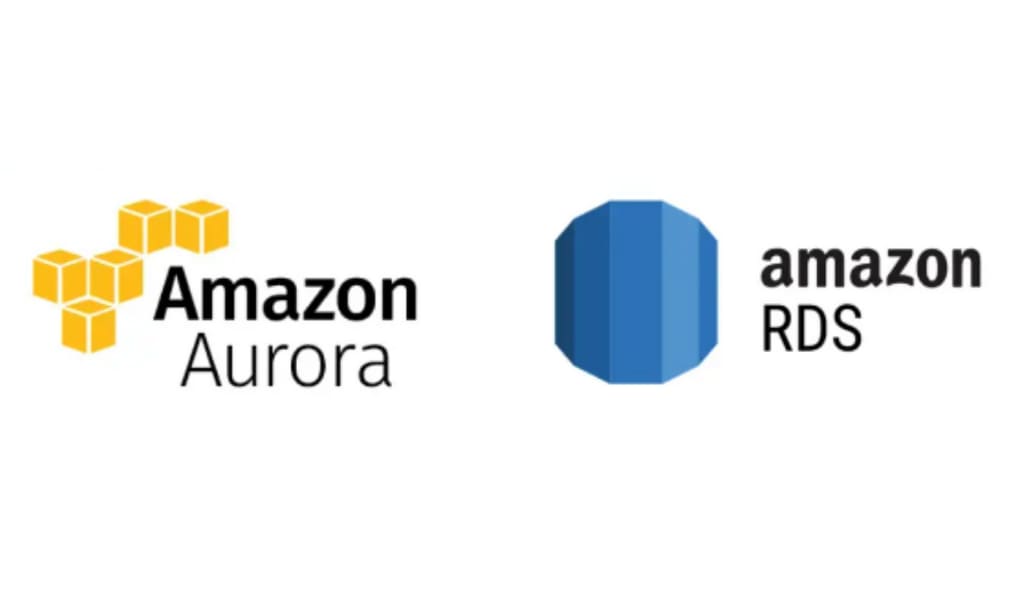Aurora and RDS: Which Database Has the Best Benefits
Explore the differences between Aurora and RDS, evaluating their benefits in terms of reliability, scalability, and integration with AWS migration services.

Amazon Web Services (AWS) offers a diverse multitude of cloud-based database solutions, including Aurora and RDS, which are widely favored options. While both services deliver trustworthy managed database solutions, they are specifically optimized to cater to distinct requirements and present exclusive advantages. This detailed guide will empower you to assess the merits of Aurora and RDS, helping you make an informed decision on the database that aligns best with your specific needs.
Understanding Amazon RDS
Amazon RDS is a comprehensive managed relational database service that supports MySQL, PostgreSQL, MariaDB, Oracle, and Microsoft SQL Server. This service simplifies configuring, operating, and scaling a relational database in the cloud by automating numerous complex administrative tasks.
Key Benefits of Amazon RDS
Ease of Use: Developers can spend more time creating applications than managing databases because Amazon RDS performs database maintenance tasks like snapshots, backups, and automatic software patches.
Engine Flexibility: RDS supports a variety of database engines, so you can choose the one that best fits your needs. Whether you need MySQL for online apps, Oracle for large-scale applications, or SQL Server for Microsoft environments, RDS has you covered.
Automated Management: RDS manages standard database maintenance tasks like replication, patch management, and backups to ensure high availability and reliability without human intervention.
Scalability: With RDS, you can easily adjust the size of your database instances by clicking a few buttons. This helps you manage different workloads more efficiently. RDS allows you to increase the size of your instances (vertical scaling) and create replicas for reading data (horizontal scaling).
Security: By integrating with AWS security services, RDS has built-in security features. These include network isolation through Amazon VPC, encryption for data in transit and at rest, and detailed access control via AWS Identity and Access Management (IAM).
Understanding Amazon Aurora
Amazon Aurora is a fast, fully managed database system that works with PostgreSQL and MySQL. It aims to provide the same availability and performance as top commercial databases but at a lower cost. Aurora is a good choice for demanding applications because it has many features, operates quickly, and is reliable.
Key Benefits of Amazon Aurora
Performance and Scalability: Aurora delivers high performance, up to five times higher than regular MySQL and twice that of PostgreSQL. Its unique architecture allows for seamless growth by separating computing and storage. Storage automatically increases from 10 GB to 128 GB as needed, with no downtime.
High Availability: Aurora's storage is resilient. It is automatically copied to three Availability Zones, has automated failover, and regularly backs up to Amazon S3. This setup ensures data safety and minimal downtime.
Global Databases: Aurora allows you to create databases spread around the world. These databases can handle disasters and can be read quickly worldwide, which is very useful for apps with many users worldwide.
Cost Efficiency: Aurora can be more affordable because of its pay-as-you-go pricing and reduced administrative overhead compared to traditional business databases. This is due to resource efficiency and automated management tasks, leading to lower overall expenses.
Advanced Security: Aurora's high-level security features include using Amazon VPC for network isolation, encrypting data in transit and at rest, and adhering to various industry standards.
Aurora and RDS: Head-to-Head Comparison
To decide which database service is best for your needs, comparing RDS vs Aurora on various parameters is important. Here are the comparison parameters for aurora and RDS
- Performance
Aurora's high-performance design allows it to significantly reduce latency and process queries at an accelerated pace, making it an ideal choice for applications that require substantial processing power and rapid response times. While RDS performs adequately, it falls short compared to Aurora, particularly when dealing with intensive workloads.
2. Availability and Durability
Aurora ensures better availability and durability by continuously backing up and automatically replicating across different Availability Zones. It is designed to handle errors with minimal impact on your application. Aurora provides high availability through multi-AZ deployments, although it may not have the same fault tolerance and recovery speed as Aurora.
3. Cost
Aurora's cost-effectiveness comes from better performance, less downtime, and automated management, even though it was initially thought to be more expensive. Using Aurora often leads to lower overall costs for applications with a lot of traffic. RDS offers varying prices based on usage, storage, and instance type. It is a good choice for smaller applications with less demanding performance needs because it is affordable.
4. Flexibility and Compatibility
It is important to note that the software's compatibility is restricted to PostgreSQL and MySQL, which may limit your choices if you prefer other database engines. On the positive side, RDS supports various database engines, allowing you to select a database that aligns with your current applications and experience level.
5. Management and Automation
Aurora automates many parts of database management, reducing administrative costs and freeing up resources for other tasks. It excels in automating scaling and failover. While RDS also automates routine administration tasks, Aurora's automation is more extensive and advanced.
Conclusion
When choosing between Aurora and RDS, consider the specific requirements of your application. Amazon Aurora offers superior performance, scalability, and advanced features, making it ideal for applications needing high throughput and availability. On the other hand, Amazon RDS provides flexibility and ease of use with support for multiple database engines and streamlined administration, which is suitable for various applications. Integrating both with AWS migration services ensures a smooth transition from on-premises to other cloud databases. Your decision should align with your database management preferences, financial constraints, and performance needs.
About the Creator
Bacancy
A Leader in Agile and Lean Software Development
Enjoyed the story? Support the Creator.
Subscribe for free to receive all their stories in your feed. You could also pledge your support or give them a one-off tip, letting them know you appreciate their work.






Comments
There are no comments for this story
Be the first to respond and start the conversation.